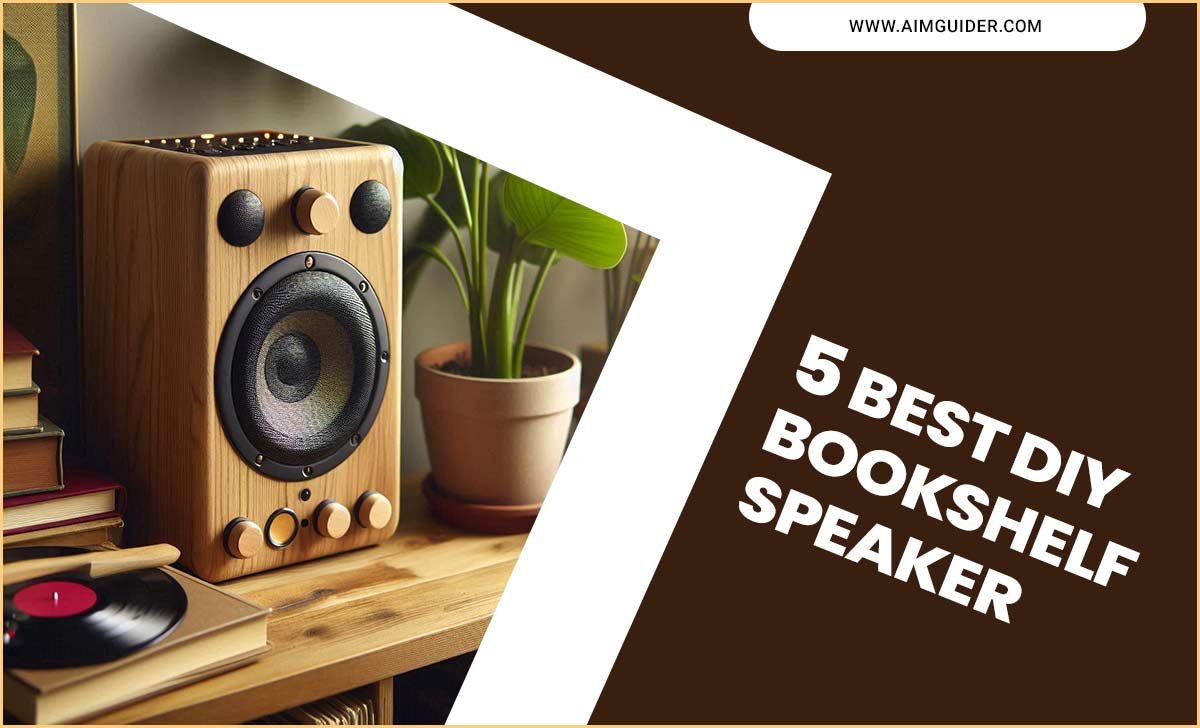Quick Summary: For most people, an 8K TV isn’t worth the extra cost yet, especially considering the lack of native 8K content. However, if you seek future-proofing or the absolute best picture quality and have the budget, a simple, intuitive remote is key. Look for remotes with voice control and minimal buttons for ease of use.
Thinking about an 8K TV? It sounds amazing with its super-sharp picture, right? But before you dive in, let’s talk about something often overlooked: the remote control. The right remote can make your fancy new TV a joy to use, while a clunky one can be a real headache. 8K TVs are a big investment, and you want to make sure you’re getting the most bang for your buck, not just in picture quality, but in overall user experience.
Many people wonder if the jump to 8K is really worth it right now. It’s a valid question, especially when 4K content is already so good and widely available. Let’s break down what an 8K TV offers, what you need to consider about its remote, and whether it’s the right upgrade for you today. We’ll guide you through it, step-by-step, to help you make a confident decision.
What Exactly Is an 8K TV?
An 8K TV offers a resolution of 7680 x 4320 pixels. To put that into perspective, that’s four times the number of pixels you’ll find on a 4K TV (3840 x 2160 pixels) and sixteen times the pixels of a Full HD (1080p) TV. More pixels mean a sharper, more detailed image. In theory, this can lead to a more immersive viewing experience, especially on larger screen sizes.
The technology behind 8K is impressive. Manufacturers have developed advanced processors to handle this massive amount of data. This allows for incredibly lifelike details, smoother motion, and better contrast. However, the true magic of 8K relies on having content that’s actually filmed and broadcast in 8K.
Why the Remote Control Matters for Your TV
You might be thinking, “It’s just a remote, how important can it be?” Well, for a cutting-edge device like an 8K TV, the remote is your primary gateway to all its features. A well-designed remote enhances your experience, making it easy to navigate menus, launch apps, adjust settings, and use smart features like voice commands. On the other hand, a poorly designed remote can be frustrating, with too many buttons, unclear labels, or a laggy response time.
For an 8K TV, the remote often includes specific features to take advantage of its advanced capabilities. This can include dedicated buttons for streaming services, quick access to picture and sound settings, and voice search. A smart remote makes controlling your entire home theater setup much simpler. It’s the difference between fumbling in the dark and effortlessly controlling your entertainment.
Is 8K TV Worth It in [Current Year]?
This is the million-dollar question, and the answer is… it depends. For the majority of people, the answer today is often “no,” but let’s explore why.
The Case Against 8K for Most Consumers
- Lack of Native 8K Content: This is the biggest hurdle. There’s very little content produced in true 8K. While TVs upscale lower resolutions (like 4K and 1080p) to 8K, the visual improvement is often subtle, especially at normal viewing distances. You’re not getting the full benefit of 8K if the source material isn’t 8K.
- High Cost: 8K TVs are significantly more expensive than their 4K counterparts. The price difference can be substantial, and for many, the visual improvement doesn’t justify the extra expense.
- Viewing Distance and Screen Size: To truly appreciate the difference in detail that 8K offers over 4K, you generally need a very large screen (70 inches or more) and you need to sit quite close to it. Most living room setups don’t meet these requirements. For reference, the human eye can only distinguish so many pixels at a certain distance.
- Limited Practical Benefit Currently: Content delivery infrastructure (like streaming services and broadcast networks) is still scaling for 4K. 8K requires much higher bandwidth, which isn’t widely available or supported yet.
The Case For 8K (For a Select Few)
- Future-Proofing: If you plan to keep your TV for many years and want to be at the cutting edge, an 8K TV could be considered. As more 8K content and infrastructure develop, your TV will be ready.
- The Absolute Best Upscaling: High-end 8K TVs boast incredibly powerful processors that do an exceptional job of upscaling 4K and even HD content. If you’re buying a premium TV regardless of resolution, the processing power in many 8K models can offer a slightly better upscaled image than a lesser 4K set.
- Largest Screen Sizes: For the absolute biggest screen sizes available, 8K resolutions are becoming more common. If you want a massive display, 8K ensures the image remains sharp.
- Photography and Art Display: If you plan to use your TV as a very large digital canvas for exceptionally high-resolution photos or art, an 8K screen can showcase them with incredible detail.
What Makes a “Proven” Remote Control for an 8K TV?
When we talk about a “proven” remote control for an 8K TV, we’re looking for a few key characteristics that ensure a smooth and enjoyable user experience, regardless of the TV’s resolution.
Key Features of a Great TV Remote:
- Intuitive Design: Fewer buttons are often better. A simple layout with clearly labeled buttons for essential functions (power, volume, channels, navigation, enter, back) makes it easy to use without thinking.
- Voice Control: This is a game-changer. Built-in microphones allow you to search for content, change channels, adjust settings, or even control smart home devices simply by speaking. This is especially useful for navigating complex menus or finding specific shows on streaming services.
- Minimal Button Layout: Many modern remotes have streamlined their design, cutting down on the number of physical buttons. Instead, they rely on on-screen menus and voice commands for less frequently used features. This reduces clutter and makes the remote easier to handle.
- Comfortable Ergonomics: The remote should feel good in your hand. A balanced weight distribution and textured surfaces can prevent it from slipping.
- Durability and Build Quality: A premium TV deserves a remote that feels solid and well-made, not flimsy.
- Connectivity: Most remotes today use Bluetooth or infrared. Bluetooth is generally more reliable as it doesn’t require a direct line of sight.
- Backlighting: For use in dark rooms, backlit buttons are a fantastic feature, making it easy to find the right button without having to turn on the lights.
Proven Remote Control Styles for 8K TVs
Most major TV manufacturers aim to provide a good user experience with their flagship models, and 8K TVs are typically at the top of their lineups. This means they often come with their most advanced remote designs.
Manufacturer-Specific Remote Types:
While specific models change yearly, the design philosophy tends to remain consistent for a brand’s premium offerings.
Samsung’s One Remote Style
Samsung’s “One Remote” is a prime example of a modern, minimalist remote. It typically features a sleek design with a limited number of physical buttons. The focus is heavily on voice control via Bixby (Samsung’s AI assistant) and context-sensitive on-screen menus. It often includes dedicated buttons for popular streaming services like Netflix and Prime Video. This design prioritizes ease of use and quick access to core functions.
LG’s Magic Remote
LG’s Magic Remote is famous for its “point-and-click” functionality, similar to a computer mouse. You can wave the remote and a cursor appears on screen, allowing you to select items with precision. It also includes voice control (usually powered by LG’s ThinQ AI, which integrates with Google Assistant and Alexa), a scroll wheel for easy navigation through lists, and dedicated buttons for streaming apps. It’s designed for intuitive interaction with LG’s webOS smart platform.
Sony’s Smart Remote
Sony’s remotes for their higher-end TVs often strike a balance between minimalism and functionality. They usually include a built-in microphone for Google Assistant or Android TV voice commands, a directional pad, volume and channel controls, and a few dedicated app buttons. The design is usually ergonomic, fitting well in the hand, and aims to provide quick access to key smart TV features.
TCL/Hisense Remotes
TCL and Hisense, known for offering great value, also produce remotes that are becoming more refined. Their remotes often feature a mix of essential buttons and voice control (sometimes using Google Assistant or Roku Voice, depending on the smart platform). They aim for accessibility and ease of use, often including dedicated streaming service buttons.
How Remotes Handle Content Upscaling
One of the most crucial functions of an 8K TV’s remote, and by extension the TV itself, is how it handles upscaling. Since native 8K content is scarce, your 8K TV will spend most of its life upscaling lower-resolution content.
This process is handled by the TV’s internal processor, not the remote directly. However, the remote plays a role in allowing you to select and fine-tune these upscaling settings. A good remote will make it easy to access menus where you can adjust things like:
- Resolution: Ensuring the TV correctly identifies the incoming signal (4K, 1080p, etc.).
- AI Picture Settings: Many 8K TVs use AI to optimize the picture based on the content type. Your remote will let you turn these features on or off.
- Sharpness and Detail Enhancers: While upscaling is automatic, some settings allow you to slightly adjust the perceived detail or sharpness.
A remote with a dedicated “Settings” button or quick access to picture adjustments will be invaluable here. You want to be able to experiment with these settings without getting lost in sub-menus.
The Role of Voice Control in 8K TV Navigation
Voice control is arguably the most significant advancement in TV remote technology in recent years, and it’s particularly beneficial for 8K TVs.
Here’s why it’s so important:
- Effortless Searching: Instead of typing with an on-screen keyboard, you can simply say, “Hey Google, find nature documentaries in 4K” or “Bixby, play ‘Planet Earth’ on Netflix.” This saves a tremendous amount of time and frustration.
- Quick Setting Adjustments: You can often adjust volume (“Volume up”), change channels (“Go to channel 5”), or switch inputs (“Switch to HDMI 2”) just by speaking.
- Smart Home Integration: Many remotes with voice control can also act as a hub for your smart home. You might be able to say, “Turn off the living room lights” if your TV supports this feature.
- Navigating Complex Interfaces: As smart TV platforms become more feature-rich, navigating them with physical buttons alone can be cumbersome. Voice control offers a much simpler alternative.
When evaluating an 8K TV, make sure to check which voice assistant it supports (Google Assistant, Amazon Alexa, Bixby, or proprietary assistants) and if the voice recognition is responsive and accurate.
Table: Comparing Remote Control Features (General Guide)
| Feature | Basic Remotes | Modern Smart Remotes | Premium 8K TV Remotes |
|---|---|---|---|
| Button Count | High (many dedicated buttons) | Moderate (essential buttons + smart features) | Low (minimal physical buttons, focus on voice/on-screen) |
| Voice Control | Rarely/Never | Common (Google Assistant, Alexa, Bixby) | Very Common (often advanced integration) |
| Navigation | D-pad, number pad | D-pad, touch surface, scroll wheel (sometimes) | Touch surface, motion cursor (LG Magic Remote), D-pad |
| App Shortcuts | Few or none | Common (Netflix, Prime Video, Disney+) | Very Common (customizable options sometimes) |
| Ergonomics | Standard | Often improved | Highly focused on comfort |
| Backlighting | Rare | Becoming more common | Often present on premium models |
What About Third-Party Universal Remotes?
While many 8K TVs come with excellent remotes, some users prefer a single remote to control all their devices (TV, soundbar, Blu-ray player, streaming box). If you’re considering a universal remote, make sure it’s compatible with modern smart TVs and supports advanced features.
Look for universal remotes from reputable brands like Logitech Harmony (though support for new devices can be hit or miss as they’ve discontinued new models), SofaBaton, or even advanced streaming device remotes if you primarily use one platform. The key is to ensure it can:
- Control HDMI-CEC (Consumer Electronics Control), which allows devices to communicate and control each other over HDMI.
- Support Bluetooth for easier pairing with smart TVs.
- Allow for customization of buttons and macros (sequences of commands).
- Potentially incorporate voice control if that’s a priority.
However, for the specific features of an 8K TV, you’ll often find that the manufacturer’s own smart remote is the most integrated and easiest to use. You can learn more about basic remote control functions for consumer electronics on resources like the Consumer Technology Association (CTA) website, which offers insights into industry standards and best practices.
Tips for Getting the Most Out of Your 8K TV Remote
Once you have your 8K TV and its remote, here are a few tips to maximize your experience:
- Read the Manual (or Watch Tutorials): Seriously, even a quick skim can reveal hidden features or shortcuts. Manufacturers often have helpful videos on their support sites.
- Experiment with Voice Commands: Don’t be shy! Try saying different things to your TV. You might be surprised at what it can do. Look for the microphone icon on your remote.
- Customize (If Possible): Some remotes allow you to reassign buttons or create custom shortcuts. See if your TV’s smart platform offers this feature.
- Keep it Clean: A dusty or sticky remote is unpleasant to use. A quick wipe with a microfiber cloth does wonders.
- Replace Batteries Regularly: A slow or unresponsive remote might just need fresh batteries.
- Understand Upscaling Settings: Use the remote to access your TV’s picture settings and see how different upscaling options affect the picture quality of your favorite 4K shows. There’s no single “best” setting for everyone; it depends on content and preference.
Frequently Asked Questions (FAQ)
Q1: Do I need a special remote for an 8K TV?
A: You don’t necessarily need a special remote, but the remote that comes with an 8K TV is usually designed to take advantage of its advanced smart features. Most 8K TVs will come with a state-of-the-art remote that is optimized for their system.
Q2: What is the main benefit of an 8K TV remote?
A: The biggest benefit is typically advanced voice control and a minimalist design that makes navigating the TV’s many features easier and faster.
Q3: Can I use my old 4K TV remote with an 8K TV?
A: Generally, no. Remotes are usually specific to the TV model or brand’s smart platform. An older remote might not have the necessary sensors or programming to control an 8K TV’s advanced functions.
Q4: How does the remote help with upscaling on an 8K TV?
A: The remote itself doesn’t perform upscaling. However, it allows you to easily access and control the TV’s settings related to upscaling, such as AI picture enhancements or sharpness adjustments.
Q5: Are 8K TVs worth buying if I mostly watch streaming services?
A: For most people, probably not yet. While streaming services are improving, true 8K content is still very rare. You get great quality with 4K streaming, and 8K TVs upscale well, but the premium cost might not be justified by the subtle improvements you’ll see.







